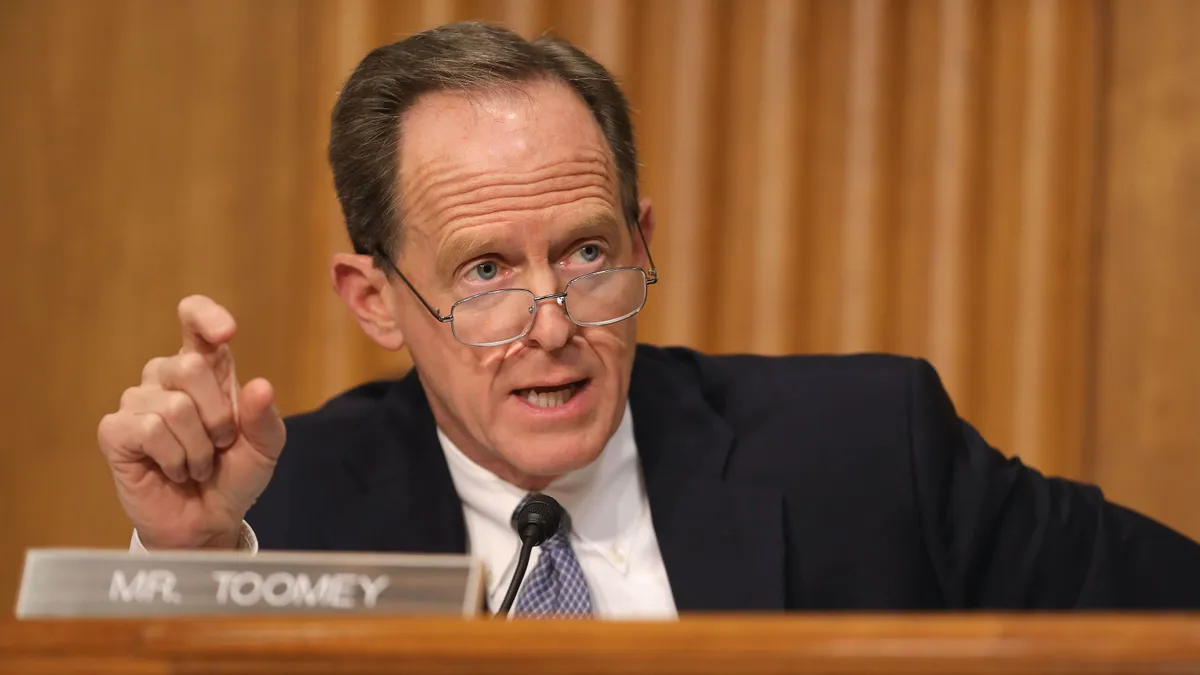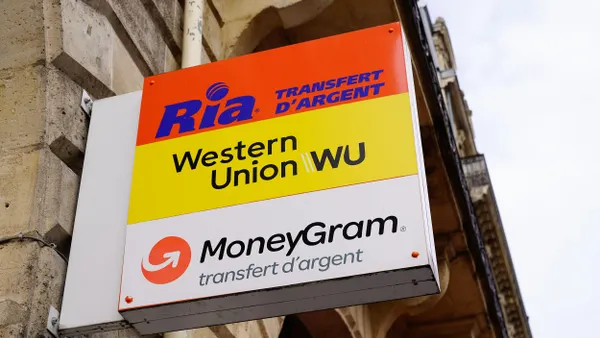Dive Brief:
- Sen. Pat Toomey R-PA, on Wednesday introduced a discussion draft of legislation that would establish a new regulatory framework for "payment stablecoins," including a new federal license designed specifically for stablecoin issuers.
- The proposed bill from the ranking member on the Senate Banking Committee would also preserve the state-registered money transmitter status for most existing stablecoin issuers and would clarify that insured depository institutions are permitted to issue the digital currency.
- Toomey’s draft comes as Democrats and Republicans continue to debate how to best regulate stablecoin issuers, and follows the release of last year’s President's Working Group on Financial Markets (PWG) report. The report called for Congress to pass legislation that would require that issuers of the digital assets be insured depository institutions that are subject to the same regulations as traditional banks.
Dive Insight:
Toomey has long advocated for innovation around stablecoins, saying the "tremendous potential benefits" of the digital currency include increased payment speed, lower payment costs and expanded access to the payment system.
"A regulatory framework should follow from legislation," he said in December, when he outlined a series of principles aimed at guiding future stablecoin legislation. "The legislation should address consumer protection and financial system risks, but it should also be designed to promote innovation in the rapidly evolving global digital economy,"
Toomey’s draft legislation, called the "Stablecoin Transparency of Reserves and Uniform Safe Transactions Act of 2022," would allow the Office of the Comptroller of the Currency (OCC) to grant a license for stablecoin issuers.
While most cryptocurrencies today are mainly used as vehicles for investment and less frequently for commerce, the bill also specifically envisions a stablecoin "designed to be widely used as a medium of exchange."
Toomey said his bill would protect consumers by subjecting all payment stablecoin issuers to standardized requirements, to include mandating that issuers disclose the reserve assets backing the stablecoin and their redemption policies. Issuers would also be subject to routine audits by a registered public accounting firm.
The draft legislation also clarifies that stablecoins that do not offer interest are not securities and rejects the Securities and Exchange Commission’s approach of regulating through enforcement actions.
"The proposed regulatory framework I’m releasing today will allow this crypto-innovation to continue flourishing while protecting consumers and minimizing potential risks from stablecoins to the financial system," Toomey said in a statement. "I look forward to receiving feedback on this legislation from my colleagues and stakeholders as Congress continues its work on stablecoin regulation."
The debate over how to best regulate stablecoins continues to be a divisive issue among Democrats and Republicans, with the topic being the subject of hearings in both chambers of Congress this year.
The House Financial Services Committee in February spent nearly five hours debating how to best implement the PWG’s recommendations.
Republicans argued overregulation could stifle innovation, while Democrats expressed skepticism over the stability and potential benefits of the digital currency.
"Washington's knee-jerk reaction to regulate out of fear will not allow stablecoins to achieve their full potential in the myriad of solutions that they may be able to present," Rep. Patrick McHenry, R-NC, the panel's ranking member, said during the February hearing. "This new technology, like all financial technology, deserves appropriate and thoughtful regulatory approaches."
House Financial Services Committee Chair Maxine Waters, D-CA, argued the public needs to be protected from the risks of stablecoins.
"Investigations have shown that many of these so-called stablecoins are not, in fact, backed fully by reserve assets," Waters said. "Simply labeling something as stable or overly relying on a one-to-one ratio does not, in itself, mean it maintains a stable value."














